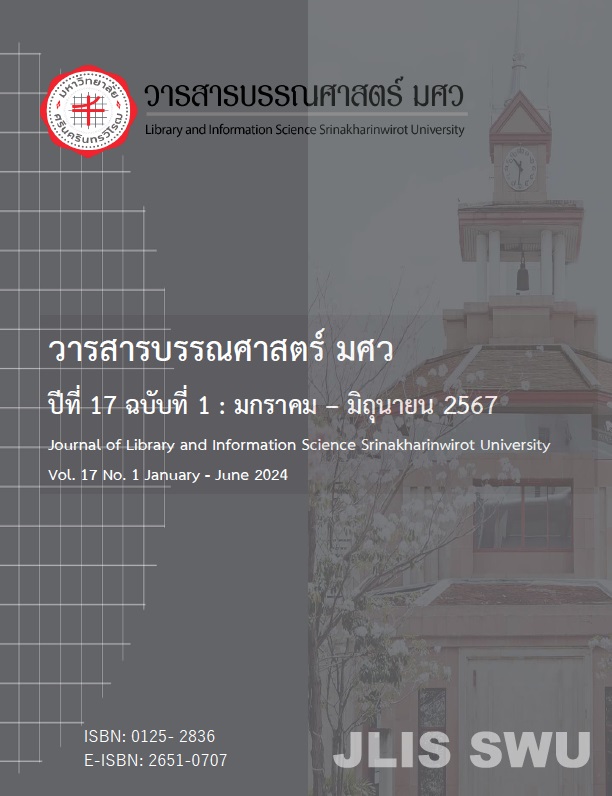Use information technology to enhance the quality of life in the aging society in Nong Wa sub-district, Benjalak district Sisaket Province
Keywords:
Information technology, Quality of life, and Aging societyAbstract
The objectives of this research were 1) to investigating the current state of utilizing information technology to enhance quality of life among aging society, 2) to examine the demand for employing information technology to improve the quality of life among aging society, and 3) to explore the guidelines for leveraging information technology to enhance the quality of life among aging society. The study sample for the Objectives 1 and 2 comprised 286 elderly people living in Nong Wa Subdistrict, Benchalak District, Sisaket Province, while Objective 3 involved 7 participants from various community occupational groups, including 1 information technology expert, 1 elderly expert from the Subdistrict Health Promoting Hospital, and 1 head of the Subdistrict Administrative Organization, totaling 10 participants. Research instruments included questionnaires and focus groups, with statistical analyses employing percentages, averages, standard deviations, and descriptive methods to summarize the findings.
The research outcomes revealed as follows: 1) The current state of information technology usage to enhance the quality of life among aging society indicated a predominant use of the YouTube application. Most participants utilized information technology for health and entertainment to communicate and access agricultural information. 2) The demand for employing information technology to improve the quality of life among aging society expressed a desire to access information regarding government-provided welfare for the elderly, entertainment, social communication, and skills to learn technology for a better quality of life. 3) The guidelines for leveraging information technology to enhance the quality of life among aging society revealed that 3.1) Concerning the physical well-being aspect, the utilization of tools aims at promoting physical well-being, such as multimedia platforms focusing on promoting physical fitness; 3.2) Concerning mental well-being aspect, the organizing group provides activities for the elderly facilitated by agencies, and incorporating stress-relieving applications; 3.3) Concerning social relationships and enhancing quality of life aspect, the promotion of communication activities to utilize information technology. This includes utilizing various applications to connect with relatives and friends, thereby promoting an unrestricted quality of life within the aging society; and 3.4) Concerning environmental quality of life aspect, the encouragement elderly people to join online businesses and facilitate self-development to increase income.
References
Chamonman, S. (2009). Improving the quality of life of the elderly with computers and the
internet. in the document Accompanying academic seminar lectures organized by
the Information and Communication Technology Club for Equality. Suan Dusit
Rajabhat University. (In Thai)
Cheyjunya, P. (2016). Utilization Patterns and Factors Influencing on the Elderly’s Communication
Technology Uses. Journal of Chandrakasemsan, 22(43), 121-135. (In Thai)
Department of Older Persons. (2021). Resolution of the National Elderly Assembly, year
https://www.dop.go.th/download/laws/th1642996662-840_0_new.pdf (In Thai)
Kleechaya, P. (2021). Digital Technology Utilization of Elderly and Framework for
Promoting Thai Active and Productive Aging. Journal of Communication Arts, 39(2), 56-78. (In Thai)
Marston, H. R. et al. (2016). Technology use, adoption and behavior in older
adults:Results from the iStoppFalls project. Educational Gerontology, 42(6), 371-387.
Ministry of Social Development and Human Security. (2018). Report on the social situation
and human security, Year 2018. https://ebooks.msociety.go.th/ebooks/detail/457 (In Thai)
Mayoungpong, A., & Tayen, K. (2016). Factors Influencing to Demand Elderly of Learning Technology in
Convergence Technology Media Era. Faculty of Business Administration Rajamangala
University of Technology Phra Nakhon. (In Thai)
Omee, N. (2022). Using information for the creation of artistic works by students.
Faculty of Fine Arts in public higher education institutions. SWU Journal of
Library Science, 15(1), 69-89. (In Thai)
Panpaeng, S., Phanpeangg, P., & Mahathamnuchock, S. (2018). The Potential of Information Technology
for the Elderly in the Area of Mae Hong Son. Chiang Mai: Chiang Mai Rajabhat University. (In Thai)
Rodkhem, R., & Chaiprasit, S. (2019). Aging Society: Technology and the Elderly.
EAU HERITAGE JOURNAL Science and Technology, 13(2), 36-45. (In Thai)
Sanserm, S. K., Tangwiwat, P., Yooprasert, B., Keowan, B., & Rattanacharoern, N. (2021). Information
Technology Usage for Economic Crop Production of Farmers. STOU Journal of Agriculture,
(1), 31-44. (In Thai)
Suwannathen, S., Kinboon, N., Tirakoat, S., Hiruncharoenvate, C., & sripasuda, L. (2019). State and
Problem of Digital Technology Usage of Elderly in Meuang District, Khon Khan Province.
Journal of Graduate School Sakon Nakhon Rajabhat University, 16(74), 235-245. (In Thai)
Tchayaphong, P., & Durongkhawerot, P. (1998). Information technology for education. Bangkok: Office
National Education Commission. (In Thai)
Tirakoat, S., & Polnigongit, W. (2018). Internet usage behaviors, literacy, and attitude towards utilization
of wellness content on the internet among Thai elderly. Journal of Nursing and Health Care,
(1), 72-80. (In Thai)
Additional Files
Published
Issue
Section
License
Copyright (c) 2024 Faculty of Humanities, Srinakharinwirot University

This work is licensed under a Creative Commons Attribution-NonCommercial-NoDerivatives 4.0 International License.
Copyright Notice
Copyright of articles in the journal of Journal of Library and Information Science Srinakharinwirot University is the author's and the Faculty of Humanities, Srinakharinwirot University. All articles submitted for publication will be assessed by a group of distinguished reviewers. The Faculty of Humanities, Srinakharinwirot University and the editorial board claim no responsibility for the contents or views expressed by the authors of Individual articles. Copying is allowed freely, provided acknowledgement is made thereof, and within the scope of copyright law.



